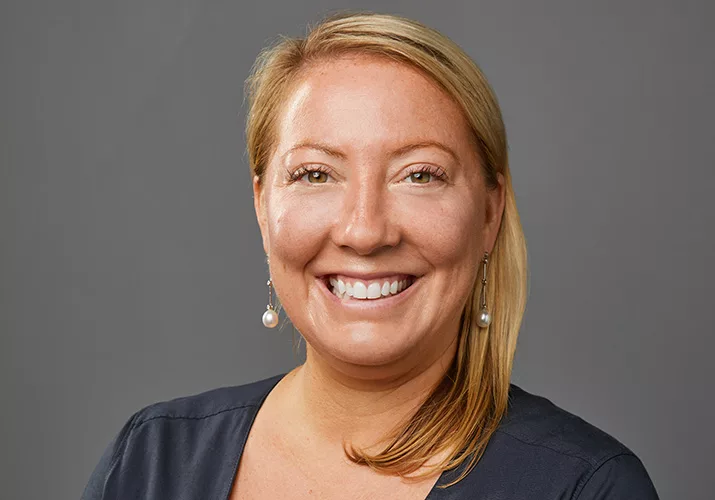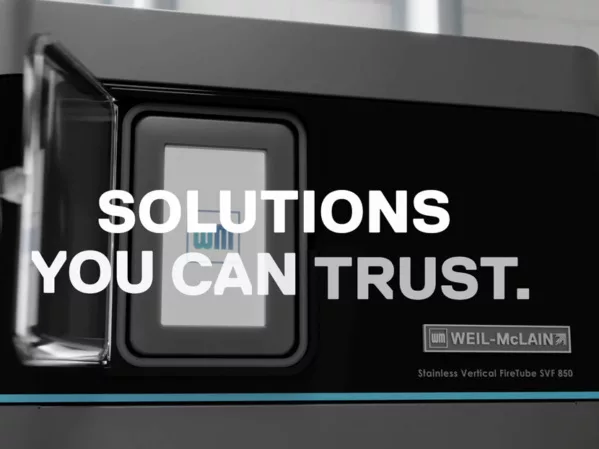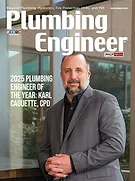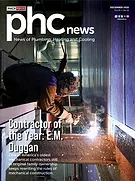We caught up with Ashley Martin, president and CEO, NIBCO, after she officially opened the company’s new Rex Martin NIBCO Interactive Museum last Nov. 12th – exactly 120 years to the day after founder Casper Schweitzer put down his life savings of $1,200 to open the Northern Indiana Foundry Works in 1904.
“We wanted to open the museum on our actual anniversary since we think it’s important to preserve what we’ve done and show what our industry does,” Martin told us after the grand opening festivities. “Casper was a skilled foundry man. So when he came to the United States, he was looking for a customer and everyone told him he needed to go to Elkhart, Indiana, because the musical instrument business was there. Our first products were keys and mouthpieces for coronets.”
In fact, those products and so many others manufactured by NIBCO over the decades are on display inside the new space. Anyone who loves history and the plumbing and piping business, will enjoy a visit to the museum. (You can read more in this feature published in our January issue: tinyurl.com/yc69p3tu)
While the building also includes space for technical training for NIBCO’s wholesaler and trade customers, the museum is meant for the general public, too.
“We’re highlighting all of our different manufacturing processes at our various plant locations to not just tell our story, but highlight the careers that are possible within our industry,” Martin adds. “So we certainly want to bring in local school groups and be helpful to our whole community. In fact, my husband is a teacher and we’ll be bringing in his class to get more feedback.”
The way forward
Martin is the fifth generation of family leadership to guide the company, which became an ESOP in 2004. It operates plants and distribution centers in the U.S., Mexico, Poland and China.
In the weeks prior to the museum’s opening, NIBCO’s board of directors promoted Martin to president and CEO. Martin joined NIBCO in 2012 and had most recently served as president and chief operating officer since 2023, but also held a variety of other positions over the years, including executive vice president, sales; vice president of wholesale sales; general manager of PEX; and director of distribution and transportation.
As with most family businesses, however, Martin has spent her entire life around NIBCO. She recalled a childhood trip she and her sister took with her father, Rex Martin, currently chairman emeritus, who lead the company from 1986 to 2018 as president and CEO to the Blytheville, Arkansas, foundry at the behest of her mother, Alice A. Martin, who served as the company’s chief revenue officer from 2015 among other roles until her passing in 2017.
“That was my first plant trip, and I think they let me play in the foundry sand, which I’m sure OSHA would not approve of right now,” Martin adds. “That’s my first memory of NIBCO, and I knew at an early age that I wanted to join the family business.”
After Martin earned an undergrad degree, her parents didn’t want her only work experience to be at NIBCO. Martin’s first full-time job in the industry was at one of the company’s wholesaler customers, where she went through its trainee program and on to other positions for a few more years. After going back to college for an MBA, Martin then joined NIBCO’s trainee program.
With so much history on display inside the museum, we also wanted to sit down with Martin and talk about where the company is heading:

PHCPPros: As much as we enjoyed learning about NIBCO’s history, what can you tell us about the future of NIBCO?
Martin: We’ve had a lot of changes at the leadership level in the past nine months, and we’ve also been very fortunate that they’ve all been internal promotions. I think that goes back to my father, who really took succession planning very seriously. It’s something we talk about with the board once a year. We’re always looking at who might be suited for another role. Who could that be? What skills does he or she need to do the job? How can we help them develop those skills?
And it’s not just at the executive level either. We’ve always focused on career development for everyone, plus we’re also implementing some new policies to make work more flexible. For example, we have paid parental leave now, and we’re also coming out with a new PTO policy.
We’re really looking at how to attract and retain our workers and also have a career plan for them because we want to help everyone achieve what they want. Also, most of our locations in the U.S. are in small towns and manufacturers are facing the same labor shortage that everyone else in the trades is so this helps us grow as a company for the future.
PHCPPros: And what can you tell us about product development?
Martin: We’ve been focused on press fittings lately since it’s increasingly what contractors want to use. In 2023, for example, we expanded our BenchPressG carbon steel fittings line. Our most recent launch is our Webstone Press XLC fittings in large diameter, and we’re looking to expand all of our lines in the press world.
For example, if you toured our copper plant in Stuarts Draft, Virginia, you’d see a lot of robotics used to put the o-rings into our copper press fittings. We’re trying to automate as much as we can, and I know a lot of people think automation equals fewer jobs, but that’s not the way we see it. We have 350 people working for us in Virginia, and we don’t see that number changing. The job or the skills needed might change, but the number of people we need I don’t see changing.
We’re also looking to invest in our foundry in Blytheville, Arkansas. We’re the last commercial iron valve foundry in the U.S., and we want to continue to make iron valves here. We’ll be making new investments at the plant over the next three to four years in order to make the processes more efficient.
Much of these improvements to plant operations go back to my father who saw a lot of U.S. manufacturers off-shore production in the 1980s, and he wanted to keep NIBCO’s production in the U.S. In order to do that, we’ve been on a lean manufacturing journey ever since. We need to always keep our operations as efficient as possible because we are competing with the world to sell our products.
We were also one of the early adopters to incorporate SAP software, which basically helps manufacturers plan how much inventory we need based on what our customers have ordered in the past. SAP also helps us ship out orders within two days of getting an order. Right now, we’re hovering right at about 95% on our on-time complete.
PHCPPros: What can you tell us about all the meetings and planning that go into your manufacturing decisions and product development?
Martin: We do like acronyms around here, and one of those is called “SLRP,” for “strategic long range planning.” It’s something that Steve Malm, who was recently appointed as our executive chairman, implemented originally, and he’s been with us for almost 30 years.
Basically, we get together in August for a few days to go over our goals for where we want to be in 10 years and then figure out what we need to do to accomplish that in the year ahead in order to get there.
For example, one of our goals is to be a billion-dollar company by 2030, and with some of our acquisitions, I think we will get there.
Now that’s a big goal, but it comes down to policy deployment; in other words, the SLRP really helps us focus in the months ahead and make sure we’re all going in the same direction together.
We have a lot of goals, but we need to be strategic about them since many of the things we may want to get done still compete for the same resources. We can’t do everything at the same time. So we really have to come together as a team and decide what’s best for the organization; what’s going to help us grow the most; what’s going to help us retain people; what’s going to make employees’ lives easier; and what products are really going to take off.
It’s a lot to plan for – it’s new products and making investments in manufacturing, people and technology. At end of the annual SLRP meetings, we typically have about 10 projects that we pick, which will help our organization align to what we want to focus on for the year ahead.
PHCPPros: We can see how these SLRP meetings help you plan the future direction of NIBCO. But can you take us back a few years and tell us about how SLRP helped to plan for something the company is doing today?
Martin: Our whole press journey began this way. We sourced press fittings in the beginning, but even that was part of a long-range plan. Eventually we internalized press fittings, but I think this whole process began in 2006, so almost a 20-year plan for us that we are still on.
And while we’re on the subject of planning, we may as well talk about what we call “Valvapalooza.” After our last four acquisitions, we get our teams and their knowledge together, get conversations going, and, of course, it’s a great way to get people to know each other. We’ve done these now with Webstone; Sure Seal; Milwaukee Valve; and Matco-Norca. Product knowledge keeps us growing so some of our projects get spurred this way from these conversations.
We’ve also organized “Brandapalooza,” that brings all of our marketing people together in order to go through all the different marketing strategies from our different brands and see what we can learn from each other and how we can help each other build those brands further.
These events are all great at building relationships, and it makes it that much easier later to just pick up the phone and talk.
PHCPPros: You touched on acquisitions and it does seem like in the last few years, NIBCO has acquired a lot of companies. What can you tell us about the decision to acquire a company?
Martin: Actually, acquisitions have been a long part of our history. That’s how we got into the iron valve business in Blytheville with the acquisition of Scott Valve in 1963. That location also represents a great example of NIBCO remaining dedicated to remaining in the U.S. In 2011, NIBCO completed a 44,000-square-foot expansion of the iron valve facility, increasing NIBCO’s manufacturing capacity and marking the opening of its distribution center. In 2017 and 2019, NIBCO continued its investment in Blytheville by purchasing two additional buildings totaling more than 200,000 square feet. Today, the NIBCO campus in Blytheville has more than 500,000 square feet of manufacturing and distribution space.
We also mentioned Stuarts Draft, which was the result of an acquisition in 1969.
When we’re looking at possible acquisitions, we certainly want the company to be in our space so we understand its market and where the company’s going. But I think another thing that we definitely look at is its culture. We want to make sure it’s a fit for us as a family business. Milwaukee Valve, for example, was a family business so that made a good fit. Matco-Norca, on the other hand, wasn’t a family business. But the owner had run it for a very long time so at the closing, he actually said that it felt like he was giving his baby away. But he also thought because we were a family-owned business, he felt comfortable that we would do what’s right for the business.
At the moment, we’re busy working on incorporating SAP at Matco-Norca. But we’re always looking for acquisitions, and we’re always open to that opportunity.
PHCPPros: We’ve been talking a lot about plant operations and products, but NIBCO wouldn’t be where it is without its people. And one display at the museum talks about your 25 Year Club, which recognizes your employees for working up to that length of time. In fact, one of the people who appears on a video has been with NIBCO for 60-some years. What can you tell us about him and NIBCO’s employee longevity?
Martin: The gentleman highlighted in the video is Norman Smith, who is now 80 years old. He started out working for our copper plant in Colorado when he was 19. After we decided to consolidate our copper operations into one site, he relocated to Stuarts Draft. He’s been with us for 61 years. He jokes that as soon as he finishes training his son, then he’ll retire. But his son has already been with NIBCO working with his father for 20 years, so we’re pretty sure he’s gotten enough training!
Right now, 16 percent of our associates are in the 25 Year Club. In addition to the 25-year mark, we also recognize long-term employees in five-year increments, and several have reached 50 years. We also have 86 families represented in our overall NIBCO family that are multigenerational; in other words, mothers and fathers worked here followed by sons and daughters. Eight families have had three generations working here.
(EDITOR’S NOTE: We also talked with Smith and other NIBCO long-term employee. Look for more on these people in a future issue of PHC News.)
I think a large part of people staying so long at NIBCO is the sense of ownership. We’re an ESOP, but even before that Ross Martin introduced an associate stock purchase plan in 1924. People feel a part of NIBCO as they should. They’re owners and with that pride of ownership they want to make the company better.
PHCPPros: We know your mother was very passionate about promoting women in our industry. What can you tell us about that?
Martin: In 2010, my mother started the NIBWomen’s Group to help develop and promote women leaders within the company. The first year the group had 23 women in it, and this year we’re going to have 77.
I think the group has helped us promote the culture that women can have a career here, and it’s helped them to go after more opportunities. As a result, more women have earned promotions, taken on different challenges and seen that they can be very successful in that. The group gives them support in the workplace and an opportunity to talk about challenges and get ideas on how to overcome those challenges. Above all, women get the confidence to say, “I can do that. I’m going to apply for that job.”
PHCPPros: You were just named CEO and president in the weeks prior to the opening of the museum. What have you learned the most about your increasing role at NIBCO?
Martin: I’ve learned to listen to the people that are doing the job. In fact, in order for them to do their jobs, part of that comes from me taking their advice.






